Viva Las Vauxhall - 1974 Vauxhall Viva
With its clean-cut design, the U.K.-market Vauxhall proved GM had its fi nger on the pulse in 1974
11/26/2019


It was not what you might expect: In 1960s America, General Motors was experimental and unorthodox, its first generation of compacts including Chevrolet's air-cooled, rear-engine Corvair and Pontiac's "rope drive" Tempest, while overseas in England, the contemporary compact Viva from GM's Vauxhall division was Ford Falcon-like in its rote conventionality. But that British compact proved just what its market wanted, and would become a popular best seller that endured through three generations and 16 years. We've spent time with a 45-year-old survivor now living in the U.S., learned the model's history from fans in the home market, and discovered how, despite some challenges, this was the right car for its time.
A mere 31,477 miles register on the odometer of Terry Gale's 1974 two-door de Luxe, making it among the lowest-mileage, best-preserved examples of the third-generation "HC" Viva. When he found it online 15 years ago, the Gold Starfire car was residing in California, under the care of the grandson of its original purchaser. "He'd had it shipped to the U.S., and it caught my eye because it's unusual—I'd never seen one before. It looks like a little British Pontiac, with the pointed front end. I liked the look of it, and it's the perfect small size." After getting the Vauxhall home to his 700-plus vehicle-strong Rambler Ranch collection in Colorado, Terry had the exterior repainted, but left the factory-installed interior intact.

If you aren't familiar with the Viva, or indeed, with Vauxhall, you aren't alone, since this veteran brand has had a very small presence in America. London's Vauxhall Iron Works was formed in 1892, and began making motorcars in 1903; within its first decade, the company had moved to Luton, built its first four-cylinder model, and begun competing in international racing. By the Teens, General Motors was looking to establish a foothold in the British market, and the first solution—in 1924, it began assembling knocked-down Chevrolets in London—was proving expensive thanks to import duties. After a failed attempt to purchase Austin, the corporation turned its attention to Vauxhall, and purchased the small (1,000 cars a year), upmarket fi rm in 1925. During the postwar small-car boom, GM would tap its U.K. arm to import the Vauxhall Victor sedan and station wagon, which looked like Tri-Five Chevrolets shrunk to three-quarter size; these were marketed to American buyers in Pontiac showrooms from 1957 through 1962.
The following year, 1963, was when Vauxhall opened its Ellesmere Port factory near Liverpool, and began construction of its new compact, the 1964 Viva. This model, internally coded HA, was initially available in two-door saloon (sedan) form, and it featured a 1,057-cc (64.5-cu.in.), 50-hp overhead-valve four-cylinder engine and 12-inch wheels and tires; a van/estate (station wagon) variant followed. The follow-up HB Viva was launched in late 1966, and it sported a fresh and attractive new two-door body, with a two-door estate arriving in 1967, and a four-door saloon in late 1968. This generation enjoyed the availability of Vauxhall's more powerful 1,599-cc (97.6-cu.in.) and 1,975-cc (12.05-cu.in.) SOHC "Slant Four" engines and sporty editions like the Viva GT, and sold well, to the tune of 556,752 built over four years.
The HC Viva debuted at the 1970 Paris Motor Show, and sales began that October. This redesigned model, in its basic two-door saloon form, had pleasingly simple, well-balanced styling; its 97-inch wheelbase was generous in proportion to its 162.9-inch overall length. A swoopier, close-coupled coupe variant called the Firenza was a new addition to the Viva line, intended to fight Ford's hot new Capri, while a four-door saloon and two-door estate rounded out the line. This generation would evolve with the times, as from late 1973, Slant Four-powered versions were called Magnums, while the Firenza would gain a limited-production, high-performance HPF variant that was visually distinguished by its aerodynamically optimized fiberglass nose cap—the fan-dubbed "Droop Snoot"—designed by the future GM vice president of design, Indianapolis native Wayne Cherry (Profile in Excellence, HCC #107).
In 1974, when the Viva on these pages was built, Vauxhall buyers could select engines ranging in displacement from 1,256-cc (76.6-cu.in.) to 1,759-cc (107.3-cu.in.) to 2,279-cc (139.1-cu.in.). Our mid-spec feature car has the smallest option under its peaked bonnet, its displacement arising from an 80.9 x 61-mm (3.19 x 2.4-inch) bore and stroke. With a compression ratio of 9.2:1 and a single Zenith-Stromberg 150 CD sidedraft carburetor, this four-cylinder makes a net-rated 56.5 hp at 5,500 rpm and 63 lb-ft of torque at 3,400 rpm. That output sounds meager, but with standard rack-and-pinion steering, a crisp-shifting full-synchromesh four-speed manual transmission, 4.125:1 final drive ratio, and curb weight at 1,903 pounds, to be precise, the Viva manages to feel, well, sorta vivacious.

"It's fun to drive. I've driven it around the property, and it's a really nice compact," Terry tells us. When asked if this British car's right-hand drive is off-putting, he dismisses the thought. "I'm lefthanded, so it's easy for me to shift with that hand and drive a right-hand-drive car."
While a contemporary 2.3-liter, 131-hp Firenza HPF coupe would run rings around our 1.3, both shared inherently capable coil-sprung underpinnings, including the subframe-mounted short and long wishbone front suspension, and four links supporting the live-axle rear. Skinny 155/80-13 radials on 4.5-inch-wide wheels added to the potential for corner-drifting fun, while braking power came from 8.5-inch front discs and 8-inch rear drums.
The HC Viva changed little through the rest of its run, which lasted until 1979. It sold well (nearly 641,000 units in this generation), despite quality issues that would have lasting consequences, as author Louis Fourie wrote in the excellent On a Global Mission: The Automobiles of General Motors International, Volume 1. "What was obvious was that the Opels and Holdens came off the line with consistent quality, yet the Vauxhall design had far greater design and production tolerances, resulting in unacceptable quality variances. These deficiencies in production engineering could not be blamed on the line workers, but instead on the engineers at Luton who had simply not set a high enough standard. With this background, it is not difficult to understand why the corporate managers in Detroit decided that this Viva would be the last total design to come out of Vauxhall. From henceforth, all Vauxhalls would incorporate a greater percentage of Opel engineering, to the point where Vauxhalls would be little more than re-badged Opels."
So this tidy little car represents the last fully British-designed model to bear the griffin crest, which now signifies French ownership, under the same Groupe PSA umbrella as Peugeot, Citroën, and ex-GM sister Opel. Like most economical small cars, the Viva was conceived for utility, but still managed to inspire a dedicated and engaged enthusiast following that's exemplified by the Vauxhall Viva Owners Club (www.vauxhallviva.com). Our basic example might not get the blood flowing like a Droop Snoot HPF, but it offered sturdy, reliable mechanicals in an understatedly attractive package, and it has been well-loved enough to inspire dedicated long-term caretakers on both sides of the Atlantic.
On this episode of Repair2Rev, join us as Riley and Dane share invaluable tips and tricks on tackling one of the most crucial aspects of vehicle maintenance: the brakes. From the essential do's and don'ts to the step-by-step process of replacing and upgrading front disc brakes, you'll learn everything you need to know to keep your ride safe and reliable.
As they move to the rear of the truck they delve into the intricate world of rear drum brake systems, demonstrating the art of rebuilding and restoring this often-overlooked component of classic trucks. And to ensure your truck stops on a dime, they'll wrap up the episode with a comprehensive guide to bleeding the brake system, leaving no stone unturned in their quest for peak performance. Knowledge gained here will help you find your bargain buy without the anxiety of lacking repair tips. Hemmings is the ultimate destination for finding your perfect ride. Head to Hemmings.com to register and start your search today.
The British motor industry is well represented on this week’s round up of successful sales on Hemmings.com. The strongest listing went to an LS V8-powered 1997 Land Rover Defender 110 custom that outperformed the market and looked to be able to well outperform a stock 110. A 1978 Aston Martin AM V8 found a new home via auction, the same fate experienced by a V12-powered 1972 Jaguar XKE Series 3 roadster. The original Jeep Grand Wagoneer was perhaps the first luxury SUV and the 1988 example sold on Hemmings.com featured low-mileage and excellent overall condition. There are few muscle cars are instantly recognizable as a Carousel Red Pontiac GTO Judge, like the 1969 model detailed below. Finally, we look at a restored 1913 Ford Model T Runabout sold from a Canadian-based collection.
For the week of May 12 through May 18, a total of 61 listings crossed the Hemmings Auctions block. Including Make Offer listings of previously ended auctions, a total of 40 cars were sold, resulting in a net 66% sell-through rate. An additional 29 cars were sold via direct Make Offer listings.
You can keep abreast of the latest consignments by subscribing to the daily Hemmings Auctions email newsletter.
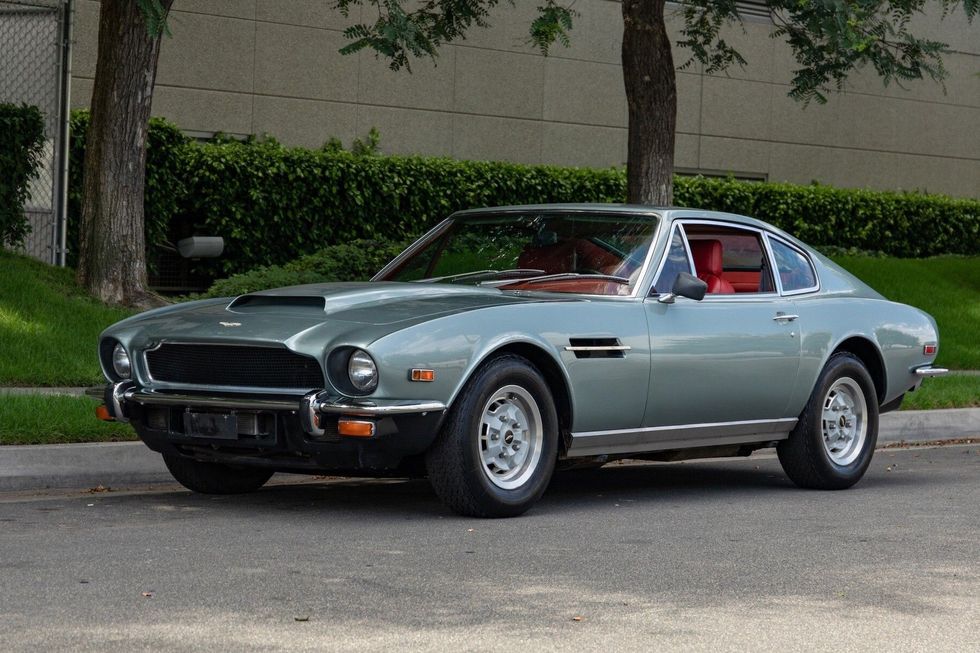
Reserve: $80,000
Selling Price: $84,000
Recent Market Range: $45,000-$80,000
Aston Martin produced some version of its V8-powered saloon from 1969 through 1989, though we are more likely to refer to the body style as a coupe on this side of the Atlantic. A beefy 5.3-liter DOHC V8 with multiple carburetors and a stout Chrysler-sourced TorqueFlite automatic very much gave the models a muscle car vibe, albeit one made with fine leather upholstery and thick wool carpets. This silver on red 1978 Aston Martin AM V8 Series III saloon, which traded hands last year via online auction for $46,988, achieved one of the highest prices seen in recent years for a coupe equipped with a standard-specification engine, particularly outside the U.K., where values are typically stronger.
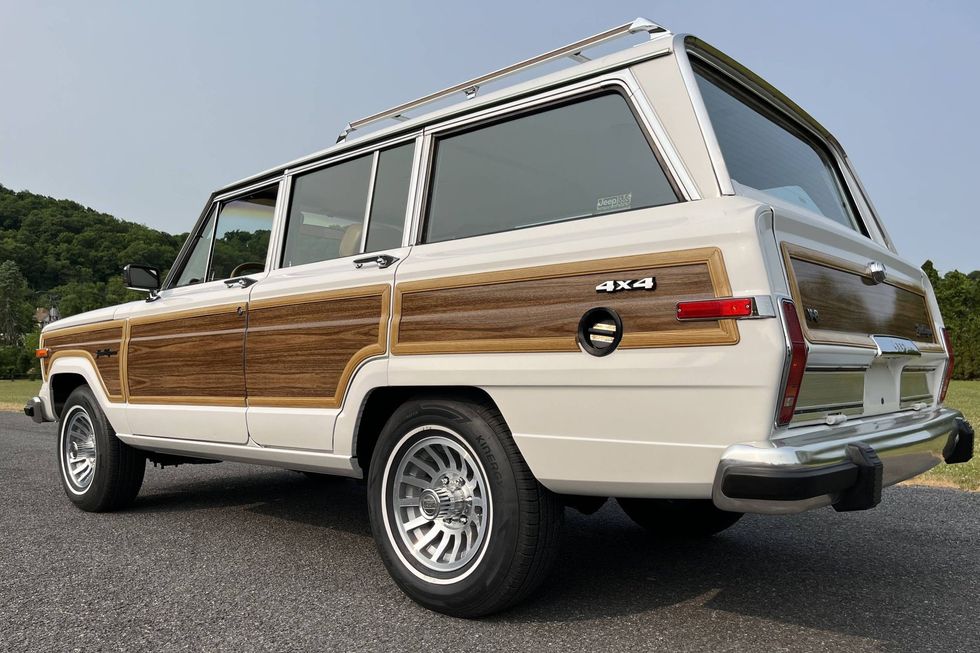
Reserve: $63,000
Selling Price: $68,775
Recent Market Range: $54,000-$75,000
Perhaps no other American vehicle has combined class and off-road capability quite like the original Grand Wagoneer, the trailblazing luxury SUV that was produced by Jeep for almost three decades. This 1988 Jeep Grand Wagoneer was submitted with just 27,417 miles showing on the odometer and plenty of notes from the seller indicating the original condition of the vehicle and all of its major components. The undercarriage, interior and engine bay photos all appeared to show an exceptionally clean example, which is notable for a rust-prone vehicle that has been in the Northeast since new. The net sale price, achieved with the 39th bid, was in line with market expectations for this very collectible vehicle.

Asking Price: $150,000
Selling Price: $157,500
Recent Market Range: $80,000-$150,000
The Land Rover Defender market shows no signs of slowing down, particularly as more and more examples are allowed into the U.S. via the DOT’s 25-year rule for previously banned imports. Likewise, there is a burgeoning market for what can best be described as restomodded examples, like this 1997 Land Rover Defender 110, which was powered by a modern GM LS3 V8, the same powerplant found in later C6 Corvettes. The list of what was original to this SUV might be shorter than what was changed, given the comprehensive nature of the build. Achieved via a direct Make Offer listing, the net sale price of this Land Rover was at the very top end of recent market activity for such customized Defenders.
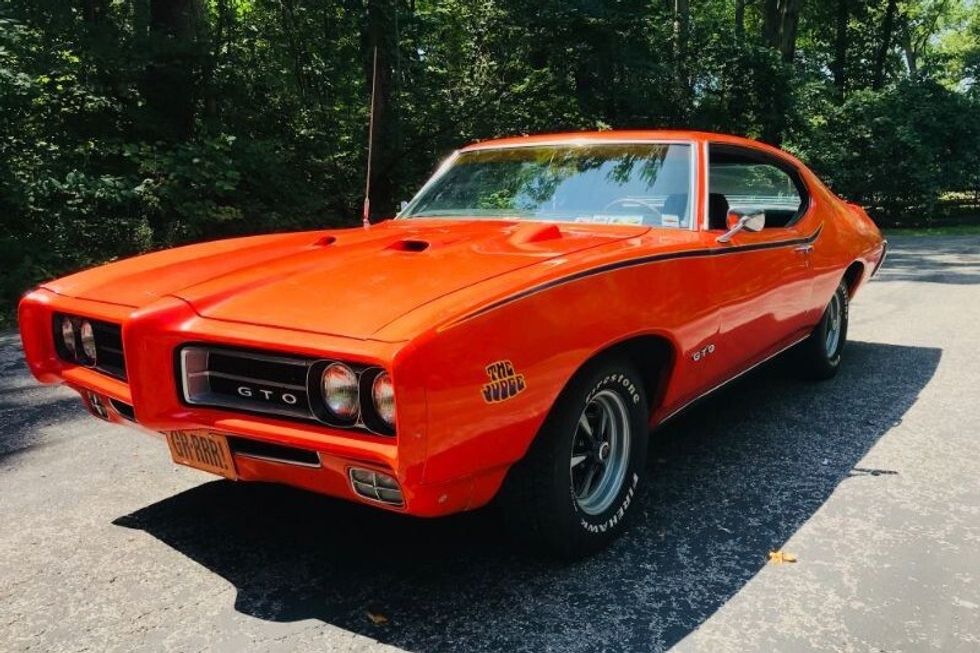
Reserve: $54,000
Selling Price: $52,500
Recent Market Range: $46,000-$62,000
This 1969 Pontiac GTO Judge ticked all the right boxes: matching numbers with photos verification of the partial VIN stamping on the engine block of the original Ram Air III V8, Muncie four-speed manual transmission, PHS documentation, and that classic Carousel Red finish and Judge decals. It looked to be in excellent overall condition, but it also appeared to have been driven and enjoyed some in recent years, with some signs of wear. And the net sale price, achieved via post-auction Make Offer listing, reflected the condition and authenticity of the car. A concours-level example, or one with a rare Ram Air IV engine for example, would likely command a premium over this one.
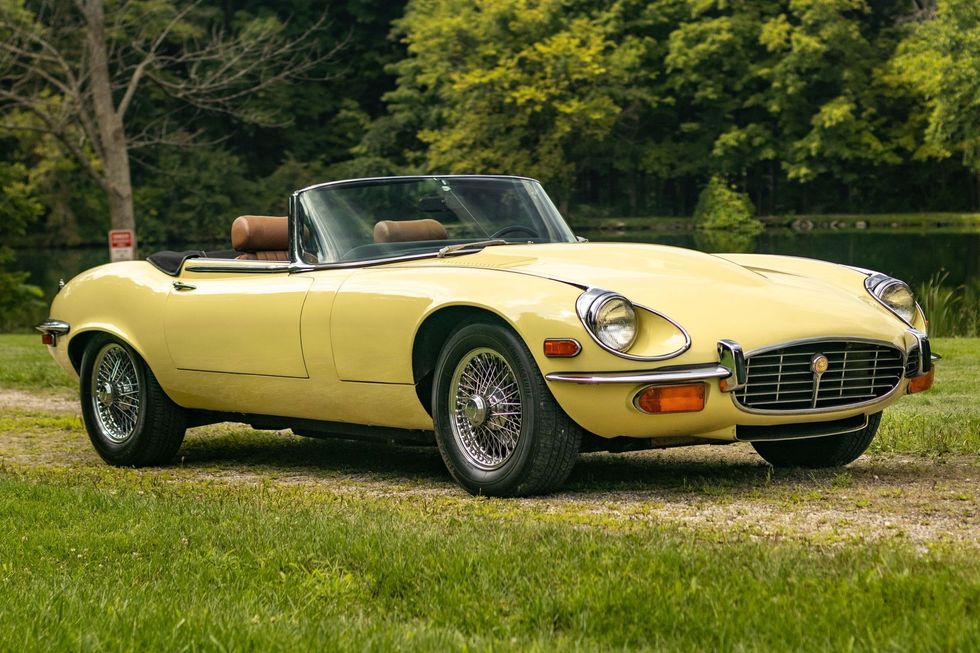
Reserve: $65,000
Selling Price: $69,825
Recent Market Range: $78,000-$115,000
The final iteration of the Jaguar XKE was a bit larger than the original and not as precisely focused on its sporting nature. Rather, with a big V12 under the hood, it was more of a GT car. This 1972 Jaguar E-type Series III Roadster appeared to have some minor wear and tear and signs of road use, but it made up for any shortcomings with what appeared to be an abundance of authenticity. The seller noted that the exterior finish, interior upholstery and engine were all original. Reflecting the low number of owners and the car’s years sitting in a museum, the odometer reading of just over 30,000 miles was also believed accurate. While the net sale price was below market expectations, it was not too far off.
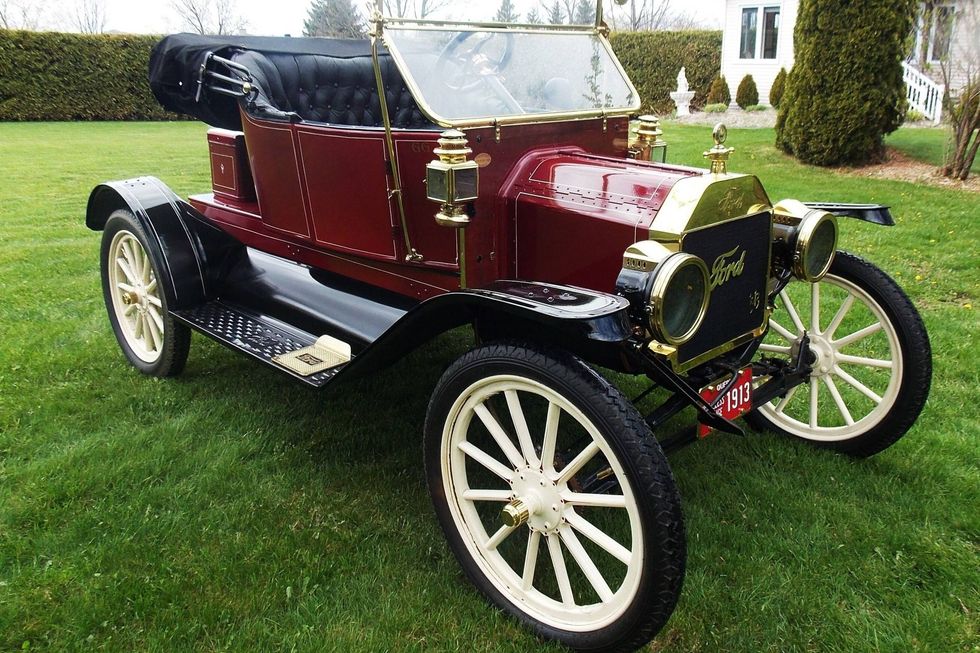
Reserve: $25,00
Selling Price: $26,250
Recent Market Range: $22,000-$36,000
There has never been a shortage of early Fords at Hemmings, dating to the earliest days of our magazine. Like any other vehicle, the most desired examples in the best condition will always attract the bidders. This 1913 Ford Model T Runabout appeared to have been restored to high level and showed only minimal signs of use. It was also equipped with an electric starter. The maroon body, black fenders and white spoke wheels nicely complemented the button-tufted black vinyl seat. The undercarriage appeared to be exceptionally clean, indicating little use for the car that was said to come from a Model T collection. The next sale price was well within the going market rate for an open-top, two-seat, early Model T.